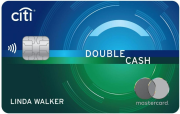The content on this page is accurate as of the posting date; however, some of the offers mentioned may have expired.

Who doesn’t like the sound of zero-percent interest? Some of the best balance transfer credit cards are actually offering zero percent interest rates on transferred balances. For the cautious consumer, this can be to a smart way to pay off debt. However, buyer beware!
You have to watch out for the possibility that dream rates such as zero percent can turn into costly nightmares. By being aware of the rules and reading the fine print, a careful consumer can take advantage of these excellent credit card opportunities.
The zero-percent applications offered by credit card companies come from the continuous competition for new customers. Their goal is volume. Credit card companies are hoping that the money made off of the people who don't follow the rules of these programs will be more than the cost of handling the wiser ones who do. That's why you constantly receive offers claiming to be the best credit card deals. It's all about the numbers.
Let’s look at the zero-percent application: A credit card company offers a credit card that allows you to transfer an entire balance and pay zero percent interest for a fixed period of time. Let’s say you have a $5,000 debt that you plan to pay off over six months at an interest rate of 16 percent. This will cost you $5,235.91. If you transfer to the zero-percent deal, you could save $235.91. Sounds like a no-brainer, right?
Unfortunately, it’s not as simple as it sounds. First of all, not everyone is offered these deals. They are only given only to people who qualify based on criteria such as credit scores, balances, and payment history. Even if you have good credit, this deal can all too often turn out to be just what it sounds like: too good to be true. Here are a few traps to watch out for when looking at these balance transfer credit cards:
Fees Charged on Balance Transferred – Watch out for cards that charge a fee on transferred balances. These are usually a percentage of the balance, with minimums that can range from $10 to a maximum of $75 and more. Remember to count this cost against your expected savings. The application may not turn out to be as good as it seems.
Late Fees - Late fees can be the nasty surprise hidden inside a zero-percent transfer package. With some cards, these fees can go from bad to worse. For example, a provider might raise the consumer's interest rate from zero to 13.99 percent after the first late payment.
A second late payment could cause the rate to further increase to 19.99 percent. So, be prepared to pay your bills on time every month if you’re going to take advantage of applying for these credit cards. Just one late payment could destroy the entire deal.
Length of Introductory Rate - Zero-percent interest rates are usually only valid for a certain length of time. This can be as short as six months or as long as the lifetime that the balance exists. Obviously, the best scenario is that the zero percent rate lasts as long as it takes you to pay off the transferred balance.
If, however, your zero-percent rate only lasts for a specific period of time, you need to calculate how long it will take you to pay off your transfer balance. If you can't pay off the entire balance in time, make sure you pick a card that has a low APR after the zero-percent rate expires. And if the APR is higher than your current card after the introductory period, recalculate your final savings. Is it still worth it?
New Purchases - Unfortunately, the zero-percent rate usually only applies to the transferred balance. Credit cards may charge you their regular APR on any new purchases you make. And it gets worse: any payments you make to the credit card will first be applied to whichever principal has the lowest interest rate.
This means that you have to pay off the entire transferred balance before any new payments can be applied to new charges which are subject to the higher APR. This could mean that you end up paying more finance charges than you originally planned on, and this cuts into any benefit that these cards provide. You may want to use a different card with a low APR and no annual fee for any new purchases in order to prevent your savings scheme from becoming a fiasco.
The bottom line is that these zero-percent transfer programs can work for you, but the key is to be aware of all the fine print and plan ahead before you even apply for a credit card. Can you make those monthly payments on time, avoid new purchases on the card, and keep your eyes open for hidden fees? If so, the zero-point credit card could be the best credit card offer for you and it may well become your new best friend.





